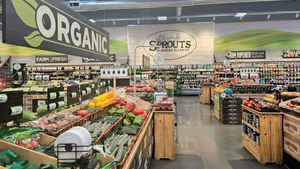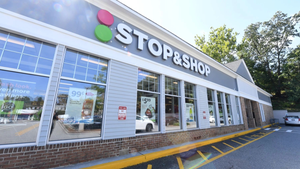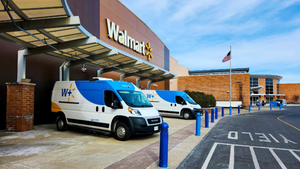Increased use of online grocery shopping ‘here to stay’Increased use of online grocery shopping ‘here to stay’
Out-of-stocks remain consumer concern as pandemic lingers, Acosta study shows
August 25, 2021

Grocery shoppers have taken a definite online turn since the onset of COVID-19, and many still see the pandemic’s impact on store shelves, a new study from CPG sales and marketing firm Acosta finds.
Forty-five percent of consumers report shopping online for groceries more now than before the pandemic, according to Acosta’s “COVID-19 Shopper Insights: Which Habits Are Sticking?” report, released yesterday. Meanwhile, around a third of those polled said they’re shopping less at grocery stores (30%) and at mass retail stores like Walmart and Target (35%) versus pre-pandemic. The findings stem from online surveys of Acosta’s proprietary shopper community conducted between July 1 and July 6.
Of people making online grocery purchases, 46% indicated they use online delivery more now than before the COVID crisis, and 40% use online pickup more. Only 11% use delivery and 15% use pickup less than prior to the pandemic.
“COVID-19 has significantly impacted consumer behavior and accelerated trends we were seeing prior to March 2020,” Colin Stewart, executive vice president of business intelligence at Jacksonville, Fla.-based Acosta, said in a statement. “While many believe we’re headed towards normalcy, it is highly likely that certain pandemic-related shopping habits — particularly consumers’ reliance on e-commerce — are here to stay.”

When buying groceries online, 45% of shoppers said they receive their orders via home delivery, Acosta said. The same percentage use click-and-collect service, but more consumers opt for curbside pickup (28%) than in-store pickup (17%). Just 9% of online grocery purchasers pick up their orders from lockers. However, 20% belong to online subscription programs, which typically offer members free unlimited pickup and/or delivery based on transaction size and frequency, among other benefits.
Online memberships had a strong affinity with younger shoppers (Generation Z and Millennials), with 40% saying they use these programs when purchasing groceries. Similarly, seniors (Baby Boomers and older) led age groups in use of home delivery (48%) and curbside pickup (32%). Generation Xers were the top users (20%) of in-store pickup, and Gen Z/Millennials were the primary users (13%) of locker services.

Two-thirds of those surveyed said they place online grocery orders via computer, led by Boomers (80%) and Gen X (66%). Twenty-seven percent of respondents use smartphones when ordering groceries online, with Gen Z/Millennial consumers by far the top users of mobile ordering at 40% versus 27% for Gen X and 13% for Boomers.
“Shoppers have become accustomed to ordering groceries online or through subscription services, with contact-free pickup or delivery options,” Stewart explained. “As we move into a new phase of the pandemic, these grocery shopping channels will remain significant, as will consumers’ increasing focus on product availability, low prices and promotions, whether they are shopping in-store or online.”
Surprisingly, grocery customers now exhibit more concern about key shopping elements — in-stock products, pricing and deals — than at the start of the year, Acosta’s study revealed. Sixty-four percent of respondents in the July surveys said product availability will be most important in the post-pandemic period, compared with 60% in January. Likewise, 63% cited low prices as most important (52% in January) and 40% named availability of promotions and deals (33% in January).
The rollout of vaccines and grocers’ protection measures appear to have allayed much of shoppers’ COVID safety concerns. Now, just 27% of consumers rank safety as most important post-pandemic, dropping from 42% in January. Customers also continue to exhibit a predilection for easier shopping methods, as 32% now rate convenience as most important versus 34% in January.

Acosta’s findings underscore that out-of-stocks remain a big issue. Two-thirds of in-store grocery shoppers surveyed said they recurrently see out-of-stock products, with 14% encountering them often and 52% sometimes. Thirty-one percent reported rarely seeing out-of-stocks in stores. Among online customers, 51% continue to notice out-of-stocks, including 42% finding them sometimes and 9% encountering them frequently, compared with 39% saying they rarely see unavailable items.
Sizable percentages of consumers also perceive on-shelf shortfalls in a range of product categories, namely those that were in high demand early on the pandemic’s stockpiling phase. Thirty-four percent of shoppers said they now see fewer paper goods (e.g. paper towels, bathroom tissue) on shelves than pre-pandemic, while 28% say the same for laundry and cleaning products and 22% find this situation with fresh meat.
Other categories cited by customers as having reduced variety on shelves include canned goods (18%), frozen food (17%) and fresh produce (15%). At the same time, 10% of consumers named each of those three categories as have more on-shelf items, while 15% cited cleaning/laundry products and 14% paper goods as having increased variety.
At-home status will remain an ongoing factor for grocery retailers and CPG marketers to consider as they gauge post-pandemic consumer behavior, Acosta’s research indicated. Overall, 48% of respondents worked from home during the pandemic, including 37% most or all of the time and 11% some of the time. And looking ahead, one in four shoppers expect to make this a permanent change.
About the Author
You May Also Like


.webp?width=300&auto=webp&quality=80&disable=upscale)



